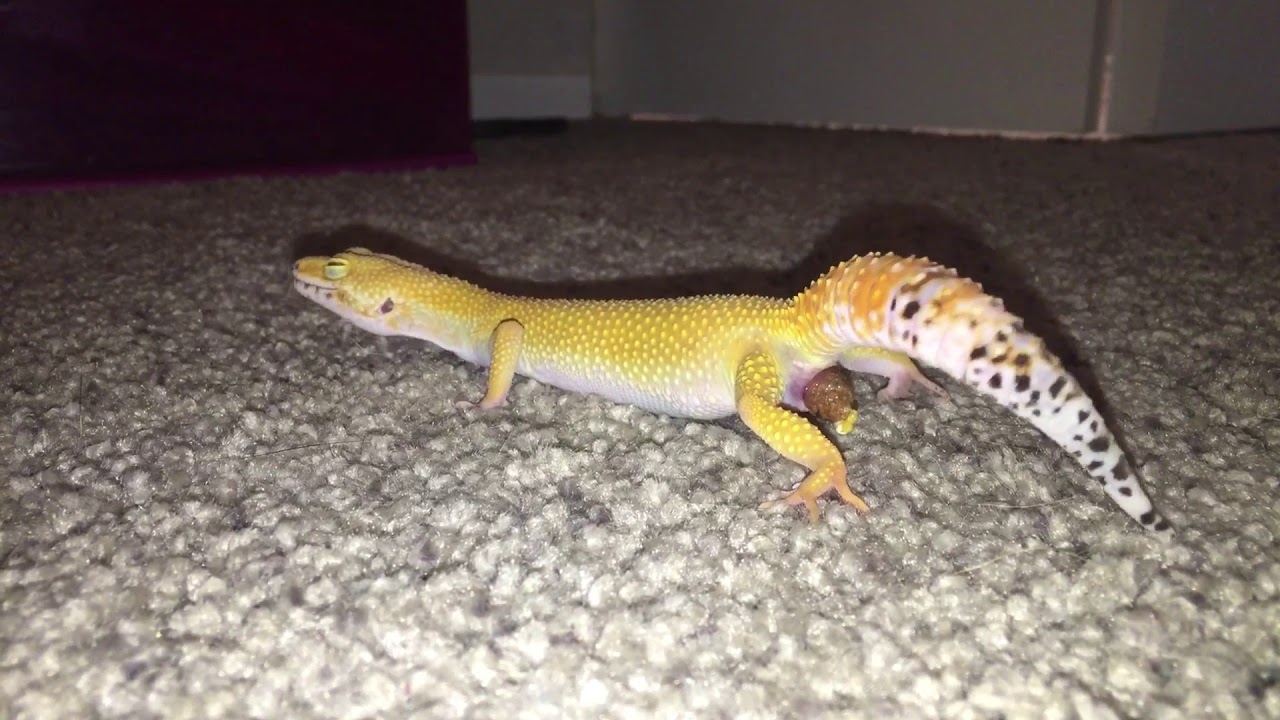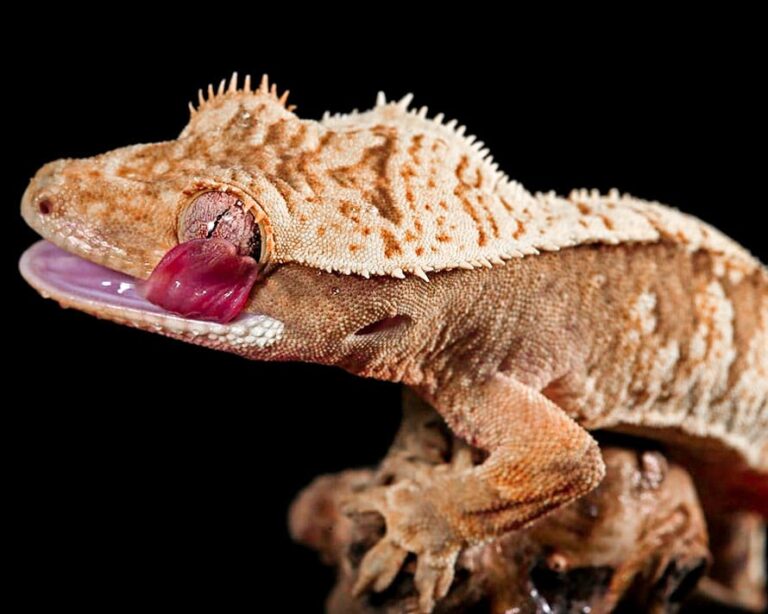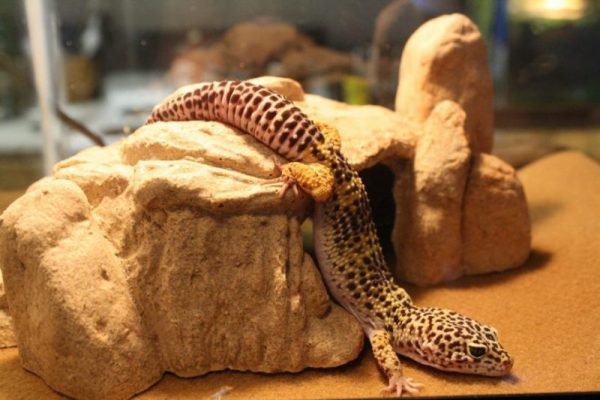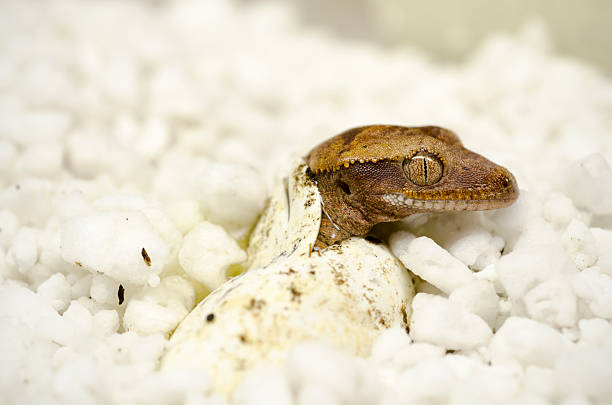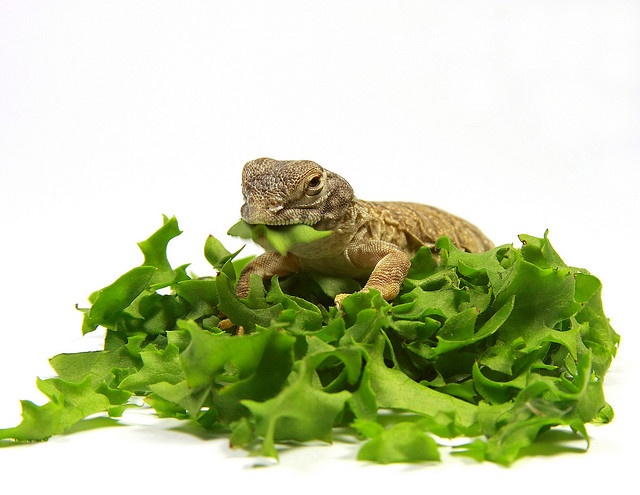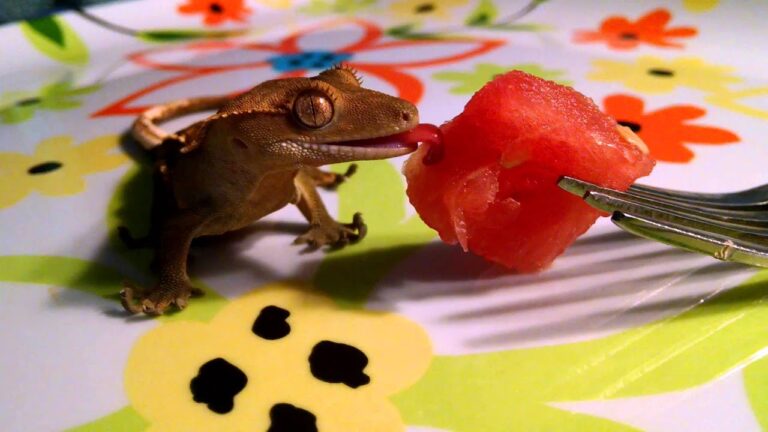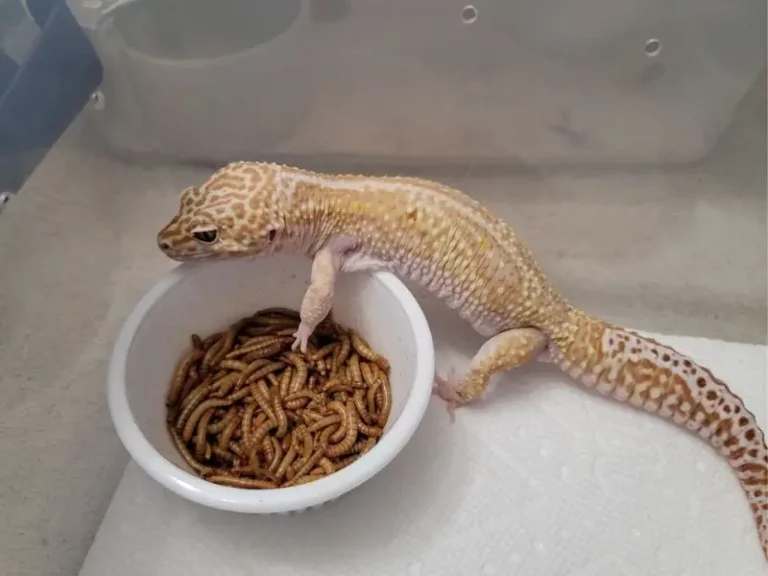How Often Do Leopard Geckos Poop? The Mystery Of Bowel Habits
As a passionate reptile enthusiast, I vividly recall the day I welcomed my very first leopard gecko into my home. The tiny, spotted creature immediately captured my heart with its endearing eyes and gentle demeanor.
Little did I know that this enchanting lizard would embark on an exciting journey of discovery with me, including one question that often baffles many reptile enthusiasts: “How often do leopard geckos poop?”
After a lot of research I find out:
- Baby leopard geckos poop at least twice a day.
- Juveniles go about three times a day.
- Adult roughly once every two days.
So, fasten your seatbelts, fellow reptile enthusiasts, as we venture into the captivating world of leopard gecko bowel movements.
How often do leopard geckos poop?
| Life Stage | Average Number of Poops per Day | Frequency of Poops with a Regular Diet |
| Baby | At least 2 times per day | Regular |
| Juvenile | At least 3 times per day | High |
| Adult | At least 1 time every two days | Low |
Here are some factors that can influence how often leopard geckos poop:
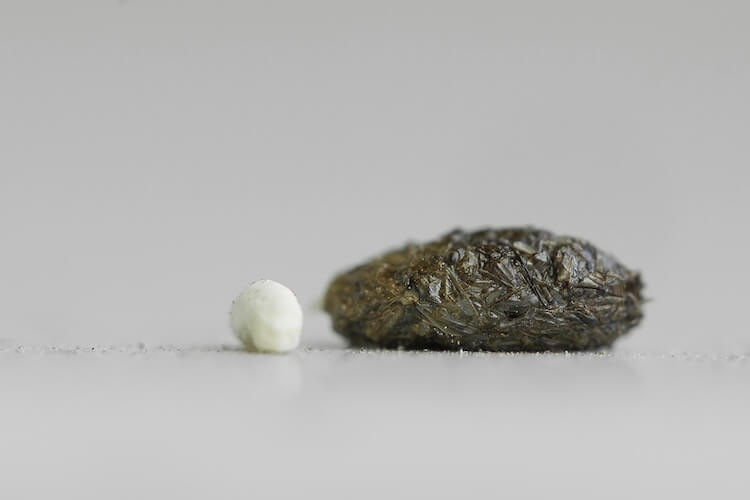
Bowel Movement Frequency: Leopard geckos typically have regular bowel movements every 1 to 2 days, influenced by various factors.
Age and Metabolism: Younger individuals exhibit more frequent bowel movements than adults, as their metabolism is higher.
Dietary Influence: The type and amount of food consumed directly affect the frequency of bowel movements. Larger or more frequent meals can result in increased defecation.
Hydration and Digestion: Adequate hydration is crucial for healthy digestion, impacting the predictability of bowel habits.
Health Factors: General health, underlying illnesses, stress, or medical conditions can lead to changes in bowel habits.
Temperature and Metabolism: Habitat temperature affects metabolic rate; colder environments may result in less frequent defecation.
Substrate Considerations: The type of substrate used in the enclosure can impact digestion and bowel habits, particularly if ingested.
Environmental Changes: Modifications to the habitat or the introduction of new tank mates can temporarily disrupt regular defecation patterns.
Parasites and Health Issues: Parasitic infections or underlying health concerns can cause alterations in bowel habits, including constipation or diarrhea.
Poop Guide:
| Poop Type | Possible Causes | Meaning |
| White or Gray | Recent shedding | Normal shedding behavior or white urate, is not a concern |
| Runny | Stress, infection, parasites, dirty tank, or spoiled food | Possible health issue; consult a vet for diagnosis |
| Green | Eating plants | Indicates an inappropriate diet; ensure no greens are being fed |
| Yellow | Too much fat from treats like wax worms | Dietary imbalance; reduce fatty treats to improve digestion |
| Parasites | Infected feeder insects | May cause weight loss, loss of appetite, or bloody poop; consult a vet for a stool test |
| Soft | Dietary change | Introduce new food gradually; soft poop could indicate cryptosporidium, a serious condition |
| Undigested Insects | low tank temperature | Insects’ exoskeletons are not digestible; ensure proper tank temperature for digestion |
| Dry | Dry, hard feces | Dehydration, insufficient hydration |
| Normal | Brown, or dark color,round in shape firm | Healthy diet, proper hydration |
Why Your Gecko Isn’t Pooping
Impaction:
Impaction, a frequent cause of constipation in reptiles, results from a buildup of debris in the digestive system. This condition can be triggered by various factors, including diet, exercise, and environmental conditions. Substrate and food are common culprits that can accumulate in your pet’s gut.
For instance, sand, which is not recommended as a substrate for most reptiles, can adhere to food or prey items and be inadvertently ingested by your pet. Nutritional imbalances may also lead them to ingest rocks or sand intentionally, causing blockages.
How to Identify Impaction: Look for signs such as a cessation of pooping, a red and swollen vent, a distended abdomen, and a loss of appetite.
Parasites
Internal parasites can cause abnormal bowel movements or even a complete loss of bowel control in your leopard gecko. These parasites, such as hookworms, roundworms, and tapeworms, can be acquired from breeders, pet stores, other pets, or the environment.
Signs of Parasitic Infection: Weight loss, dehydration, lethargy, and changes in feces consistency. Diagnosis requires a fecal examination at a vet’s office, and treatment involves specific antiparasitic measures. Fortunately, they are typically treatable without causing permanent harm to your gecko.
Temperature Concerns
They like all reptiles, are ectotherms, relying on external heat sources to regulate their body temperature. Inadequate temperatures in their enclosure can lead to a slowdown in their metabolic processes, resulting in reduced activity, decreased eating, and eventually, a halt in pooping.
Optimal Temperature Range: Maintain a temperature range of 70°F to 90°F in their enclosure, with one end cooler than the other to allow for thermoregulation. Ensure that your Leo environment is neither too hot nor too cold.
Dehydration
Dehydration is a frequently underestimated cause of constipation. Leopard geckos, originally from arid desert-like habitats, may suffer from dehydration if their enclosure lacks access to water.
Signs of Dehydration: Pale appearance, sunken eyes, and loose, wrinkly skin. Dehydration can lead to dry and impacted waste in the large intestine, contributing to constipation.
Preventing Dehydration: Provide access to fresh water and maintain proper humidity levels in their enclosure.
Decreased Appetite
A notable reason for your gecko to stop pooping is a simultaneous loss of appetite. This is often an indication of an underlying health issue.
Signs of Decreased Appetite: If your gecko stops eating and pooping altogether, it’s crucial to investigate further. It may be a symptom of an illness, pain, or discomfort.
Prompt Action: Consult your veterinarian to determine the cause of appetite loss and constipation.
Changes in Enclosure
Leopard geckos are known to have designated spots in their enclosure where they prefer to defecate. Alterations in their environment, such as rearranging items, adding new tank mates, or modifying their habitat, can disrupt their established poop routine.
Managing Changes: While enclosure modifications can provide mental stimulation, be mindful of how your gecko reacts. They might need time to adjust to their new surroundings before resuming their regular pooping habits.
How Can You Help Your Leopard Gecko Poop?
Ensuring Your Leopard Gecko’s Health: Strategies to Treat and Prevent Constipation
When your cherished pet falls ill, it can be a distressing experience. The worry that you might have somehow contributed to their discomfort can be overwhelming. While constipation is not entirely avoidable, it is often manageable and preventable. Each underlying cause of constipation requires a tailored approach to treatment and prevention.
Dealing with Impaction
When your gecko is suffering from impaction and has stopped pooping, the best course of action is to consult a veterinarian immediately. It can be a severe issue, and attempting to alleviate it by massaging your gecko’s belly could potentially harm their digestive tract.
In addition, at the veterinarian’s office, radiographs will typically be taken to identify the contents accumulating in your gecko’s belly. Based on the findings, the veterinarian will proceed with the most appropriate treatment. It’s essential to avoid attempting to treat sand, rock, or food impactions at home, as this could seriously harm your pet.
Addressing Parasites
If you suspect that parasites are causing your gecko’s constipation, the solution is relatively straightforward. Administer the antiparasitic medication prescribed by your veterinarian. This treatment not only targets adult parasites but also eliminates larvae and eggs.
Further, to prevent future parasitic infestations, practice excellent husbandry with your leopard gecko. Always wash your hands before and after handling them, keep them separate from other pets, and maintain clean tank conditions. If you allow them outdoor time, ensure it’s in an enclosed space that shields them from parasites and potential predators.
Maintaining Adequate Humidity Levels
Proper humidity levels are crucial for all captive reptiles, even if your pet hasn’t experienced constipation. They requires humidity levels around 40% relative humidity. If you live in a dry environment, you must make an effort to maintain adequate levels. Strategies include adding live plants and providing a larger water dish. Correct humidity levels contribute to smooth and effortless bowel movements.
Always Offer Water
Despite their desert-dwelling nature, captive leopard geckos should always have access to water. Even if they don’t drink directly from their dish, they may use it for cooling down or rehydrating their skin. A water dish serves as a convenient way to ensure your gecko stays hydrated, which, in turn, promotes regular and easy bowel movements.
Consider a Warm Bath
Bathing them can be a topic of debate, but in certain situations, it can help alleviate constipation in a dehydrated or constipated gecko. A warm water bath can provide quick relief, and your gecko might even poop while in the water.
After the bath, it remains crucial to address the underlying cause of dehydration to prevent future constipation.
Supplements for Added Health
Supplementing your pet diet may seem unconventional, but it can significantly contribute to their overall well-being and prevent constipation. In captivity, they might not receive all the nutrients they would in the wild.
Also, adding calcium and vitamin D3 supplements to your gecko’s meals reduces the risk of metabolic bone disease and supports overall bodily functions, reducing the likelihood of constipation.
FAQs
1. Where do leopard geckos poop?
Leopard geckos typically poop in their enclosure, often choosing a specific spot, which can make cleanup easier.
2. Does leopard gecko poop smell?
Leopard gecko poop usually has a mild odor compared to some other reptiles, making it relatively less pungent.
3. How do I know if my leopard gecko is impacted?
Signs of impaction in a leopard gecko may include a distended abdomen, lethargy, and a lack of bowel movements. Consult a vet if concerned.
4. How do you get rid of gecko poop?
To clean leopard gecko poop, remove solid waste with a paper towel or scoop, then clean the affected area with a reptile-safe cleaner and water.
5. Is Gecko Scat Harmful?
Leopard gecko scat itself is not typically harmful, but improper cleaning and hygiene in their enclosure can lead to health issues.
6. How Does The Gecko Poop?
Leopard geckos excrete feces through their cloacal opening, usually in the form of firm, brownish pellets.
7. Is Gecko Poop Useful?
Leopard gecko poop can provide insights into their health if observed for any unusual changes. Otherwise, it doesn’t serve a practical purpose.
Final Words
In conclusion, my journey into understanding how often leopard geckos poop has been both enlightening and fascinating. Baby leopard geckos tend to poop at least twice a day, making their bowel movements quite frequent.
Also, As they grow into juveniles, their pooping habits become even more active, with at least three times a day being the norm. However, when leopard geckos reach adulthood, their pooping frequency eases, and they typically go about once every two days.
Moreover, as a responsible owner, it’s crucial to remember that while they do have general patterns of poop frequency, each one is unique. Depending on food, age, and temperature.
Further, these resilient creatures, with their quirky personalities and delightful quirks, continue to be a source of joy in my life. So, whether you’re a seasoned gecko enthusiast or a newcomer to the world of reptile keeping, always remember to cherish the moments spent caring for these remarkable creatures, poop and all.

